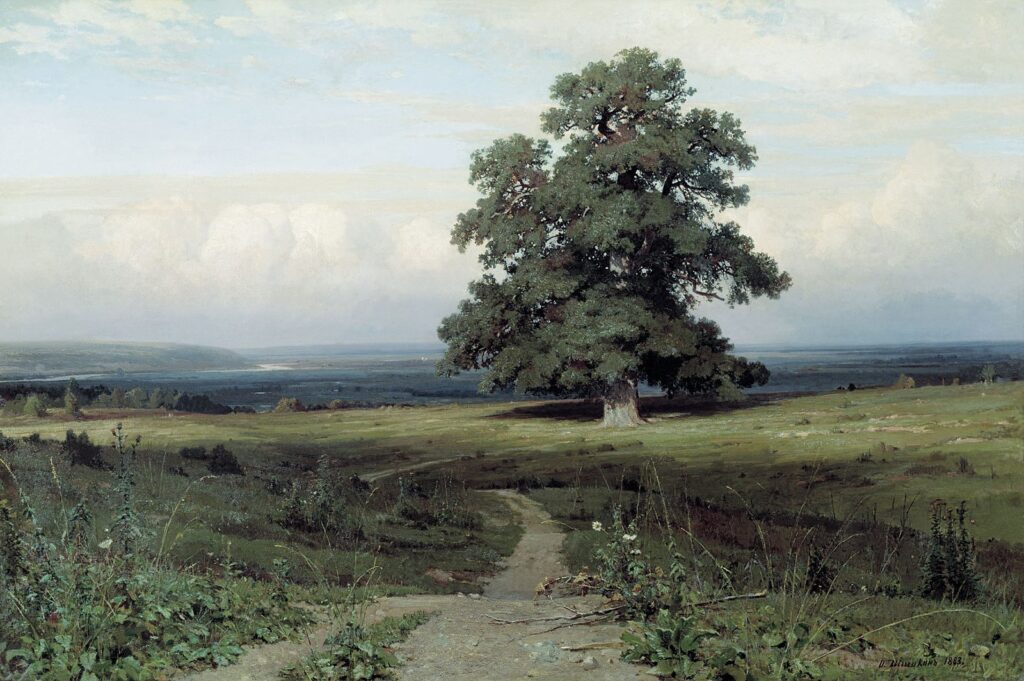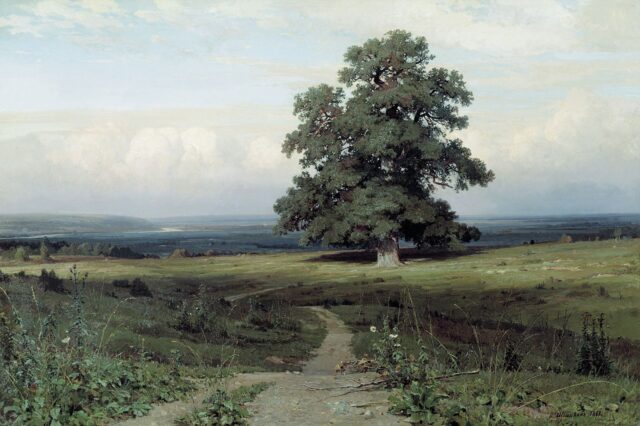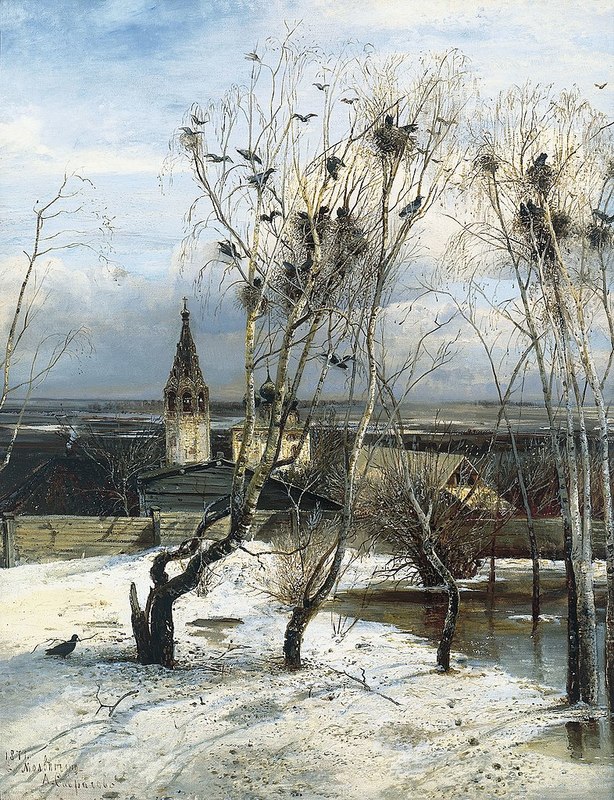“The pottery class exists so the clay can draw the poison out of the students’ fingers.” David Kidd
Alex Kerr, Lost Japan, Penguin Books, 2015, p. 96
Photo Source: https://upload.wikimedia.org/wikipedia/commons/4/45/Savrasov.Grachi_prileteli-1879.jpg
“The Rooks Have Come Back” (1871) is one of Savrasov’s most famous works. The scene captures the moment of thaw, revealing subtle atmospheric reflexes of this moment of transition. At the same time, the dynamic change in nature’s state also displays the plainness of this vision.
At this stage of my research, I’ve been looking into biographies and backgrounds of works of Savrasov, Shishkin, and Levitan. Looking into new ways in which their works could be of use in our time, I stumbled upon the aforementioned quote in Alex Kerr’s Lost Japan which inspired a new perspective on the plainness of the 19th century Russian landscape paintings. The “poison” referred to in this quote is the culturally encouraged aspiration to “become a unique person.” In the Oomoto Foundation pottery class mentioned in the book American students face great hardship in creating a simple tea bowl, necessary for the wabi style of Japanese tea ceremony, adding elements to their bowls to make them less “boring” and more unique.

In this work, we see the vast grounds that extend far beyond the painting. Plain at first glance, upon closer study feeling of solitude arise, evoked by the sole, prominent tree and the lonely branch that has fallen on the viewer’s path.
Photo Source: https://upload.wikimedia.org/wikipedia/commons/0/00/ШишкинИ.И.%281883%29Средидолиныровныя.jpg
Kerr’s work on Japan unexpectedly redirected my research into looking at how these artists and their visions could interact with modern day problems. I pursue my research with growing concerns for my generation and the ones to follow. Mental disorders and health issues are rising as we become more “civilized;” the search for solutions appears more and more concentrated within the technocratic and sterile approaches that are often abstracted from real, tangible communities, and the natural order. I wonder what drew the late 1800s public to the works of Savrasov and other Russian peredvizhniki landscape painters, and whether this pattern can be replicated to free the coming generation of the “poison” that stresses the need to “be interesting” and postulates “uniqueness” as a requirement of survival, a perverse invasion of Maslow’s hierarchy of needs. By analyzing the birth and popularity of the late 19th century Russian landscape works, I hope to find how to incorporate appreciation of plainness back into the society that is drifting away from the overall ecosystem into the consumerist and destructive concrete and plastic jungles.

